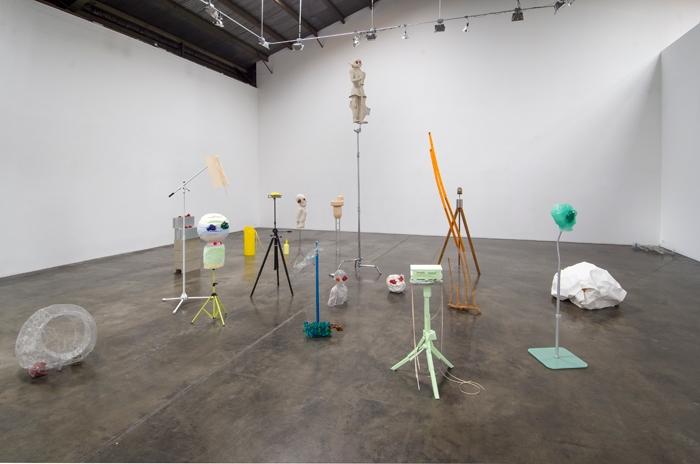ArtReview sent a questionnaire to artists and curators exhibiting in and curating the various national pavilions of the 2019 Venice Biennale, the responses to which will be published daily in the lead-up to the Venice Biennale opening on 11 May.
Shirley Tse is representing Hong Kong. The pavilion is part of the Biennale’s programme of Collateral Events, and is located at Arsenale, Castello, 2126 (Campo della Tana).
What can you tell us about your exhibition plans for Venice?
The exhibition is titled Stakeholders. Morphologically speaking, there are a lot of ‘stake’ and ‘holder’ forms in the sculptures I made for the exhibition!
Philosophically speaking, the exhibition is a continuation of my exploration of the concept of heterogeneity, in particular how differences enter into negotiation with each other. Interdependency, play and the non-predetermined will be foregrounded in two different installations, one indoor and one outdoor. Different technologies will be used, including woodturning, 3D printing and HAM radio. A variety of materials will be used alongside different species of wood. I’m using new methods so it’s a very exciting moment for me.
What does it mean to ‘represent’ Hong Kong? Do you find it an honour or is it problematic?
As a counterforce to globalisation, it is vital to have a space that reflects on specificity. However, given that many artists live and work across the boundaries defined by the national pavilion context, it begs the question of whether that model is an obsolete one.
Is your work transnational or rooted in the local?
I’m more interested in the realm of plasticity, my work is not about a specific kind of geographical locale, and actually the concept of fluidity reflects Hong Kong’s identity, it’s in constant transition.
How does having an official collateral event in Venice make a difference to the art scene in Hong Kong?
Hong Kong does have a unique cultural and political identity – postcolonial and now in transition between different ideologies. Having an official collateral event gives voices to such representation and lived experience.
If you’ve been to the biennale before, what’s your earliest or best memory from Venice?
My first visit to the Venice Biennale was in 1990. Bernd and Hilla Becher were in the former West Germany Pavilion and Jenny Holzer was the first living woman artist to represent the United States.
You’ll no doubt be very busy, but what else are you looking forward to seeing?
I worked with Ralph Rugoff when he was based in California. I am looking forward to seeing his May You Live in Interesting Times.
The Venice Biennale runs 11 May – 24 November
